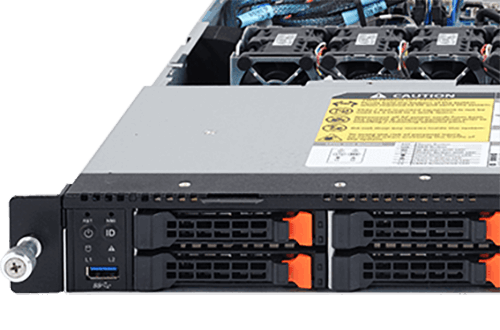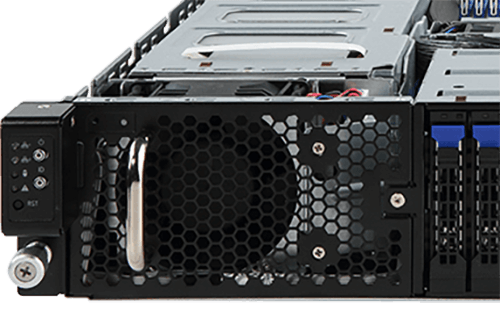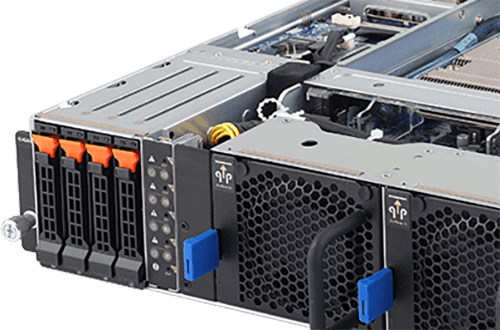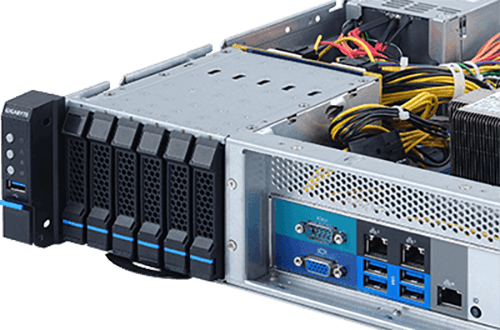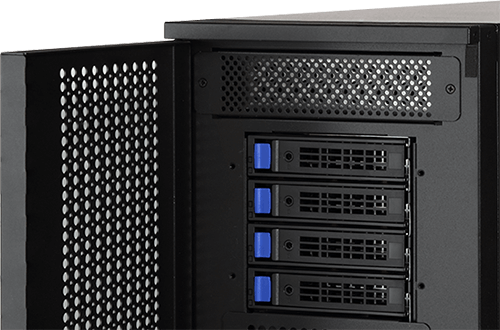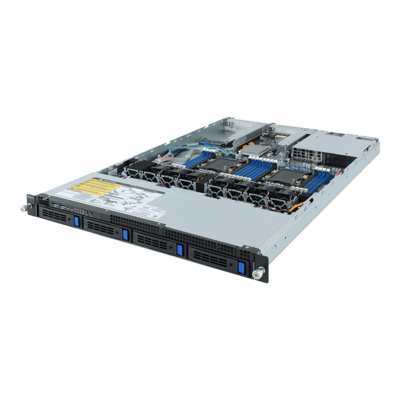
Taipei, Taiwan, 3rd April 2019 – GIGABYTE is proud to announce our range of server systems and motherboards are fully ready to support the 2nd Generation of Intel Xeon Scalable Family processors, codenamed “Cascade Lake”, which are officially being launched today.
GIGABYTE has a rich product family of dual socket server systems and motherboards based on the Intel Xeon Scalable Family platform, including 1U and 2U general purpose rackmount servers, as well as specialized servers for AI and HPC optimized for GPU density, multi-node servers optimized for HCI, and storage servers optimized for HDD / SSD capacity. These products are engineered to support the full family1 of different Xeon Scalable SKUs (Bronze, Silver, Gold and Platinum) that are workload optimized to support different applications, making your GIGABYTE server ideal for a myriad of use cases, from enterprise IT and database, cloud and storage to the most high-demand HPC workloads.
The 2nd Generation of Intel Xeon Scalable Family processors, also known as “Cascade Lake” still use the same CPU microarchitecture as the previous “Skylake” generation of processors, produced with Intel’s enhanced 14nm process technology and based on the “Purley” platform (with Intel’s C62x series chipset). However, optimization of the processor microcode and enhancements built into the silicon has brought the following notable new features:
- Overall Performance Enhancements: Higher CPU frequencies, improved turbo profiles vs. prior-gen Intel Xeon Scalable processors
- Increased DDR4 Memory Speed & Capacity: Up to 2933MHz (1 DIMM per channel on some SKUs), 16Gb based DIMM supported
- Intel Deep Learning Boost: A new feature that can significantly accelerate inference performance for deep learning workloads optimized to use VNNI (Vector Neural Network Instructions)
- Security Enhancements: Including hardware mitigations for side channel analysis methods (such as Meltdown / Spectre security vulnerabilities), offering higher performance over software only mitigations.
Ready for Intel® Optane™ DC Persistent Memory
GIGABYTE’s 2nd Generation Intel Xeon Scalable Family processor servers also come ready to support Intel Optane DC Persistent Memory, a revolutionary new product that re-defines traditional memory & storage architectures by filling the gap between DRAM, which is ultra-fast but low capacity and expensive, and SSDs, which are higher capacity and more affordable but slower, by enabling a large persistent memory tier between DRAM and SSDs that’s fast and affordable.

Intel Optane DC Persistent Memory modules (also known as “DCPMM”) integrate seamlessly into existing DDR4 DIMM slots2 on each GIGABYTE server, and use Intel’s 3D Xpoint memory technology, which unlike DRAM retains data after power is removed. The modules will be available in capacities up to 512GB – a massive increase compared to the current maximum 128GB of industry-leading DDR4 memory sticks – and can be addressed by the OS or application either as memory (Memory Mode) or storage (Application Direct Mode).
The high capacity, persistence and affordability compared to DRAM of Intel Optane DC Persistent Memory will allow users to bring more data closer to the CPU, for faster time to insight. Larger datasets can be stored entirely in memory, and database restart times can be reduced from hours and minutes down to seconds. When paired with the 2nd Generation of Intel Xeon Scalable Family processors on GIGABYTE servers, users will see real performance, throughput and persistent advantages on many of the most memory bound workloads.
To learn more about GIGABYTE’s family of servers ready for the 2nd Generation of Intel Xeon Scalable family processors and Optane DC Persistent Memory and where to buy them, please visit https://www.gigabyte.com
For any further information, please email GIGABYTE at server.grp (at) GIGABYTE.com
1 CPU SKU compatibility will depend on the maximum CPU TDP supported for each system, please refer to each product’s specification page for further information.
2 The maximum number of DCPMM that can be installed per system and the DIMM slot positions that can be used for DCPMM will vary according to each server model due to thermal considerations. Please refer to each product’s specification page for further instructions.







